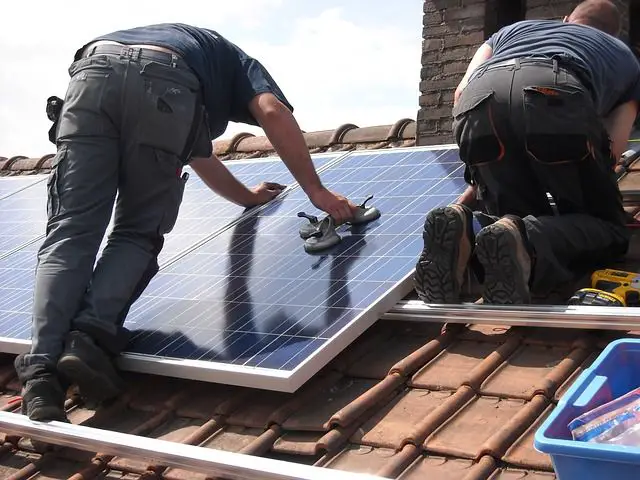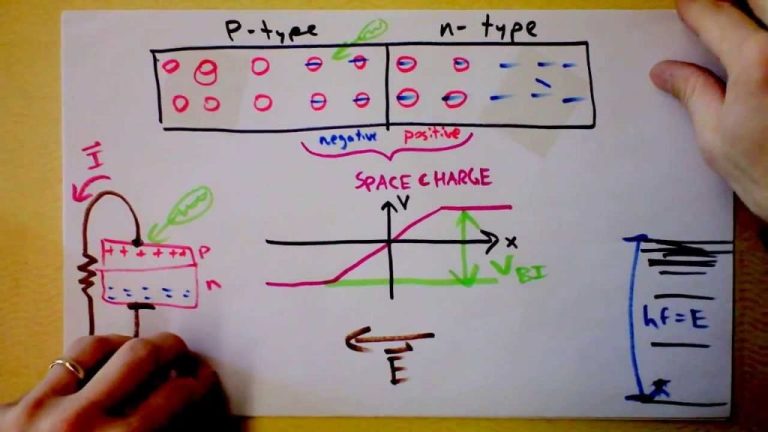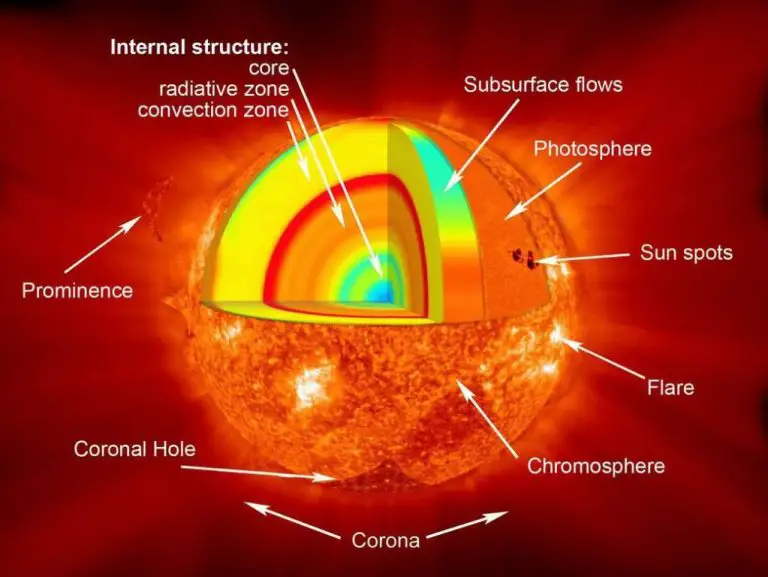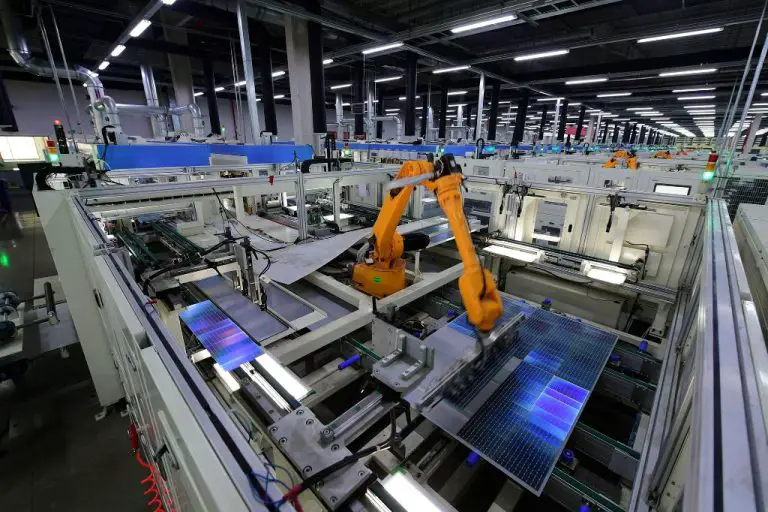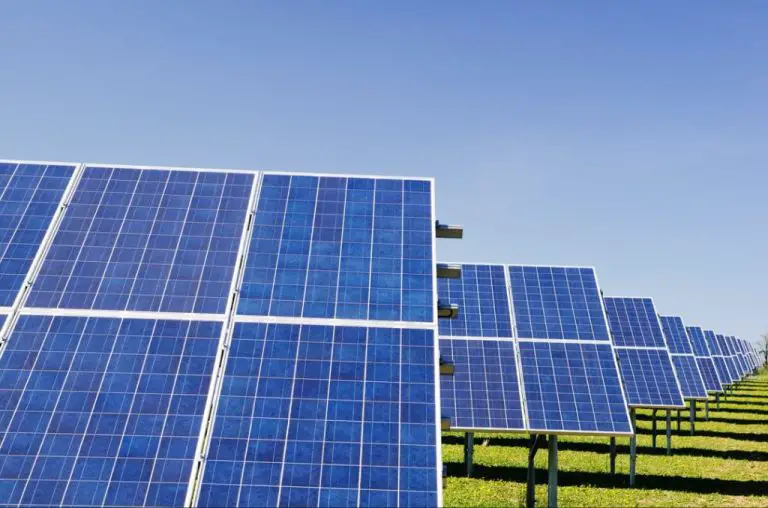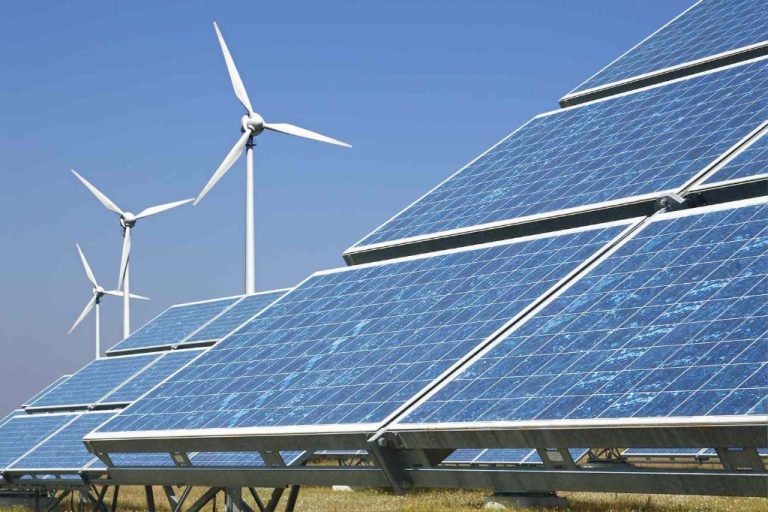What Energy Gets From The Sun?
Solar energy is the radiant light and heat from the Sun that is harnessed using a range of ever-evolving technologies such as solar heating, photovoltaics, solar thermal energy, solar architecture, molten salt power plants and artificial photosynthesis. It is an essential source of renewable energy and its technologies are broadly characterized as either passive solar or active solar depending on how they capture and distribute solar energy or convert it into solar power.
Solar energy is an important renewable energy source that can help reduce our dependence on fossil fuels. It is abundant, inexhaustible and clean. By deploying solar technology, we can harness the Sun’s energy to generate electricity, provide lighting, heat water and spaces, and produce fuels like hydrogen. The development and adoption of solar energy can improve energy access, support local economies, reduce pollution, and mitigate climate change.
There are several technologies that utilize solar energy, such as photovoltaics, concentrated solar power, solar heating/cooling, passive solar building design and artificial photosynthesis. This article will provide an overview of the main types of solar energy technologies and how they are used today.
Solar Radiation
Solar radiation refers to the sunlight and radiant heat emitted by the sun. The sun produces energy through nuclear fusion reactions in its core, converting hydrogen into helium. This process releases enormous amounts of energy in the form of electromagnetic radiation, including visible light, ultraviolet light, and infrared radiation.
The sun’s radiation propagates through space at the speed of light until it reaches Earth’s atmosphere. Some radiation is absorbed or reflected by the atmosphere, but much of it passes through and reaches the surface. The amount of solar energy reaching any given spot on Earth depends on location, time of day, weather conditions, and seasonal variations.
On average, Earth intercepts 174 petawatts (1.740×1017 watts) of solar radiation at the upper atmosphere. About 30% is reflected back into space by clouds, gases, and particles in the atmosphere. The remaining 70% or 121 petawatts is absorbed by the land masses and oceans.
This incident solar radiation drives Earth’s climate system and provides the energy that powers photosynthesis in plants and algae. It also serves as a renewable energy source that can be harnessed for electricity and heat using solar technologies.
Photovoltaics
Photovoltaic (PV) cells, also known as solar cells, are devices that convert sunlight directly into electricity. PV cells are made from semiconductor materials, like silicon, that are specially treated to form an electric field. When sunlight hits the cell, the energy from the photons of light knocks electrons loose in the semiconductor material, allowing them to flow freely and produce an electric current.
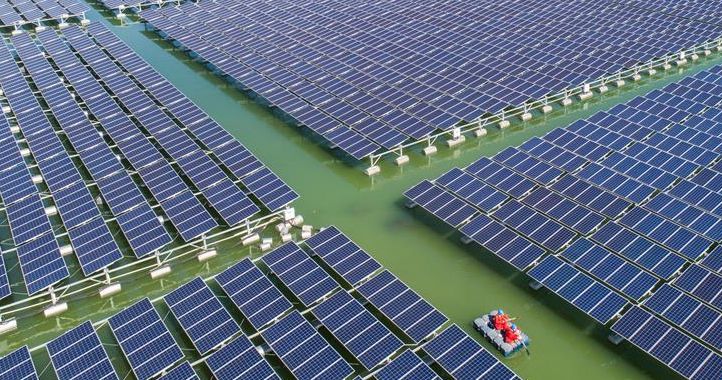
There are a few key steps in how PV cells convert sunlight to electricity:
- Photons from sunlight hit the PV cell and are absorbed by the semiconductor material, like silicon.
- The energy from the photon knocks an electron loose from its atom, allowing it to flow freely.
- Special treatment of the PV cell creates an electric field that forces the electrons to flow in one direction, producing an electric current.
- Metal contacts on the PV cell collect the electrons and transfer them to wires to carry the electricity for use.
PV cells are extremely versatile and have many different applications and uses. Some of the most common are:
- Rooftop solar panels on homes and businesses
- Solar farms that produce electricity at utility scale
- Power generation for satellites in space
- Small-scale solar chargers and panels for camping or travel
- Integrating PV cells into building materials like roof tiles or windows
- Solar roadways with PV cells embedded in highways and streets
PV offers a clean, renewable way to harness the abundant power of the sun and turn it into usable electricity for homes, businesses, and infrastructure.
Solar Heating
One of the most direct ways to harness the sun’s energy is through solar heating technologies. Solar thermal collectors can absorb heat from the sun and transfer it to water or air, which can then be used for a variety of applications like water heating, space heating, and solar cooking.
Solar water heaters are one of the most common uses of solar thermal technology. They use collectors such as tubes or panels that absorb heat from the sun. The collectors contain a heat-absorbing material like copper through which water flows. As the water moves through the collector, it absorbs the heat and warms up. This heated water can then be stored in a tank and used for washing, cleaning and cooking.
Solar space heating uses larger solar thermal collectors to heat air or a liquid, like water or antifreeze solution. Fans or pumps circulate the heated air or fluid through the building or specific rooms. This directly offsets the need for electricity or gas for heating the interior space.
Solar cookers use reflectors to concentrate solar radiation onto a cooking vessel. This allows food to be heated directly by the sun’s rays. Solar cookers are often simple devices like boxes lined with aluminum foil or small parabolic dishes. They provide a sustainable cooking alternative that requires no fuel and helps avoid the health hazards of cooking over open fires.
With solar thermal technology, sunlight can be harnessed directly to provide heat for essential needs like cooking, space heating and hot water.
Concentrated Solar Power
Concentrated solar power (CSP) systems use mirrors or lenses to concentrate sunlight onto a receiver, heating a thermal transfer fluid that is used to spin a turbine to generate electricity. CSP provides a compelling way to utilize solar energy on a large scale for grid electricity production. There are four main types of CSP technologies: parabolic trough, linear Fresnel reflector, power tower, and parabolic dish.
In parabolic trough designs, long parallel rows of parabolic reflectors concentrate sunlight onto a receiver tube that runs along the focal line of the trough. The thermal fluid in the tubes can reach temperatures over 400°C. The hot fluid is used to generate steam to power a turbine generator. Trough systems can incorporate thermal storage, allowing electricity production to continue when the sun is not shining.
Power tower systems use a field of flat mirrors called heliostats to focus and concentrate sunlight onto a central receiver on top of a tower. The receiver gets intensely hot, over 1000°C in some cases. The heat is used to generate steam or directly heat molten salt, which can efficiently store the thermal energy for hours. Power towers provide higher temperatures and efficiencies compared to trough systems.
Solar Fuels
One promising way to harvest solar energy is through artificial photosynthesis to create renewable fuels like hydrogen. This process uses sunlight to split water into hydrogen and oxygen in a process that mimics natural photosynthesis in plants.
Artificial photosynthesis uses special semiconductors called photoelectrochemical cells that are designed to absorb sunlight. When sunlight hits the semiconductor, it energizes electrons which then get transported to catalyze the water-splitting reaction.
The hydrogen produced from artificial photosynthesis can be used as a zero-emission fuel for transportation, heating, and electricity generation. Combusting hydrogen produces only water as a byproduct. Storing solar energy in the form of hydrogen fuel provides a clean way to overcome the intermittency of solar power.
Researchers are working to improve artificial photosynthesis by finding more efficient and low-cost materials that can optimize the conversion of sunlight into renewable hydrogen fuel. If perfected, this technology could provide a sustainable carbon-free fuel and significantly reduce reliance on fossil fuels.
Solar Architecture
Passive solar building design takes advantage of sunlight’s natural heating and lighting abilities to reduce the need for mechanical heating, cooling, and lighting systems. The key aspects of passive solar design include:
– Orienting the building to face the equator (south in the northern hemisphere, north in the southern hemisphere) to maximize solar gain
– Installing properly sized and shaded windows on the south-facing side to allow low-angle winter sun to enter, but block high-angle summer sun
– Using thermal mass materials like concrete floors and walls to absorb solar energy during the day and release it slowly at night
– Careful consideration of overhangs, blinds, and other shading devices to prevent overheating in summer
– Using landscaping and trees strategically to shade the building in summer and allow sunlight through in winter
– Allowing natural ventilation and cross breezes to keep the indoor space cool
– Using high levels of insulation to reduce conductive heat transfer
– Implementing passive cooling techniques like radiant barriers and reflective roofs
Solar air heating systems, often called solar collectors, can actively harness sunlight to heat air or water for building heating systems. Roof-mounted collectors oriented to the south maximize exposure to the sun’s energy.
Daylighting design takes advantage of natural light to illuminate the interior of a building. Proper daylighting reduces the need for artificial lighting, saving energy. Effective daylighting strategies include installing larger windows, skylights, light tubes, reflective surfaces, and using light shelves to bounce natural light deep into a building.
Agriculture and Horticulture
The sun’s energy can be harnessed in various ways to support agriculture and horticulture. One key application is using solar power for drying agricultural products and desalinating irrigation water.
Solar drying involves using the sun’s thermal energy to remove moisture from fruits, vegetables, grains, spices, and other crops. This is often accomplished using solar dryers, which consist of a drying chamber with solar collectors to heat the air. The warm, dry air quickly removes moisture, preserving the nutrients and flavor of the crops. Solar drying is an eco-friendly, low-cost method to preserve foods and reduce post-harvest losses.
In areas with limited freshwater, solar desalination provides a sustainable way to create usable water for irrigation. Solar stills and other solar-powered desalination systems remove salt and impurities from brackish or seawater using the sun’s heat. The freshwater produced can support crop cultivation, even in arid environments.
Solar power can also be used to pump and treat irrigation water, further supporting agricultural activities. Greenhouses too can utilize solar heating and electricity to create optimal growing conditions for plants and crops. Overall, solar energy has diverse applications in agriculture and horticulture, helping improve food security and sustainability.
Transportation
Solar energy has promising applications in the transportation sector. Solar-powered vehicles utilize photovoltaic cells to convert sunlight into electricity to charge batteries or power electric motors. Solar vehicles come in many forms including cars, buses, boats, planes, and trains.
Some of the most advanced solar cars can travel over 1,000 miles on a single battery charge. The key components are the solar array, motor, battery storage, and vehicle design optimized for efficiency. While range is still limited compared to gas vehicles, solar cars produce no direct emissions making them an eco-friendly transportation option.
Solar-assisted electric vehicles (EVs) have solar panels on the roof or hood to charge the main battery and increase driving range. Adding just a few hundred watts of solar can provide a couple extra miles per day and reduce grid charging needs. Solar EVs are now commercially available from automakers like Hyundai, Toyota, and Lightyear.
Solar planes are able to fly without fuel through the power of photovoltaics. The high altitude provides more consistent sunlight exposure. In 2016, the Solar Impulse 2 became the first solar plane to circumnavigate the globe without using any fossil fuels. Solar boating is also an emerging trend for leisure and commercial transport along waterways.
While solar transportation technology is still developing, it shows enormous promise to reduce fossil fuel dependence. With improvements in efficiency and battery storage, solar-powered vehicles could play a major role in sustainable transportation worldwide.
Conclusion
Solar energy has a wide range of uses that benefit society in many ways. From generating electricity through photovoltaics and concentrated solar power, to providing heat for buildings and processes, to enabling plant growth in agriculture and horticulture, solar energy is an incredibly versatile and valuable resource.
Moreover, solar energy offers a clean and renewable alternative to fossil fuels that can help mitigate climate change and build a more sustainable future. The potential to harness the sun’s abundant energy through emerging technologies like solar fuels also provides reason for optimism about the role solar can play in years to come.
While solar currently meets only a small fraction of global energy demand, costs continue to fall and efficiencies continue to rise. With the right policies, investments, and deployment, solar can realistically be scaled up to become a major pillar of the world’s energy system this century. The development and adoption of solar energy will be vital for building resilient, zero-carbon communities around the world.

